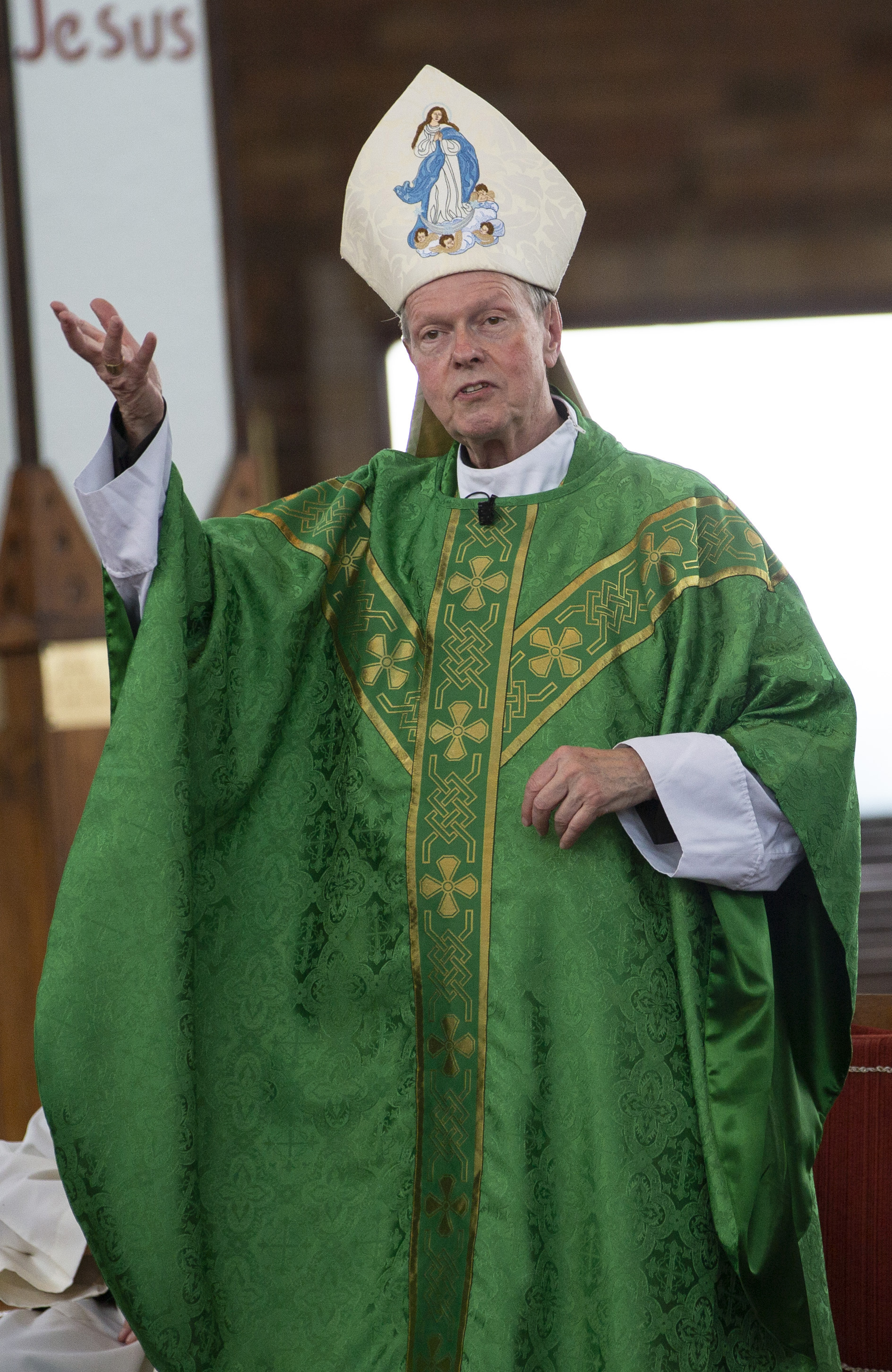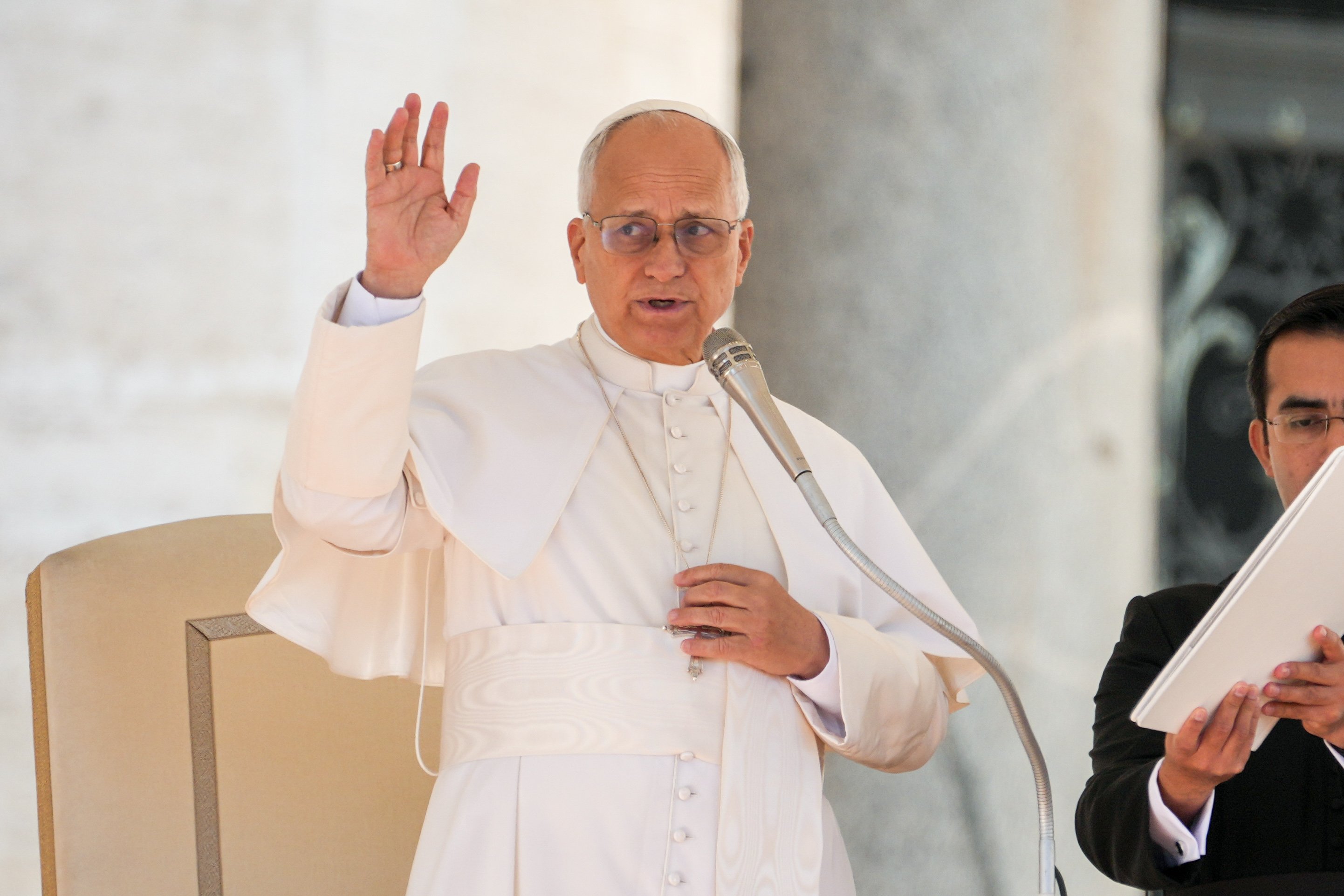November 1, 2024 at 9:45 a.m.
WHAT’S THE FUTURE OF SYNODALITY?
Julia McStravog compares these days immediately following the end of the Synod on Synodality's second assembly to a "bye week" in football -- a period of rest and recollection before the work continues.
The synod's 400-some participants from six continents, including more than 350 voting delegates, have just spent four weeks in Rome and Vatican City. In the days following the closing Mass on Oct. 27, they traveled home, reacclimating to their typical routines and responsibilities.
After completing their work and approving the synod's final document, this transition time "gives this space that's necessary for the learning, the thinking, the understanding, the contemplation, the discernment -- and also just giving their brains a break," McStravog told OSV News on Oct. 30. "They did a whole lot of work over the past month. … Next week will be the beginning, the start of the implementation."
McStravog is the U.S. Conference of Catholic Bishops' senior adviser for the synod, and has worked closely with the U.S. delegates as they've participated in two month-long assemblies for the 16th Ordinary General Assembly of the Synod of Bishops -- the first in October 2023, and the second completed Oct. 27. She also works with diocesan leaders endeavoring to implement synodal principals in their local churches.
"Even though we have this document and the synod is over, synodality is not over," McStravog said.
The next steps for implementing the ideas and expectations surfaced by the Synod on Synodality begin with discerning the synod's final document, which synod delegates approved via a paragraph-by-paragraph vote Oct. 26. The final document has 155 paragraphs. "That's not a small document," McStravog said.
As of Oct. 31, the only official version of the document was in Italian, with a working translation available in English. An official English translation is expected in the coming days.
"The first step is going to be reading the official translation and taking that … into discernment," McStravog said. "Of course, in the U.S., we have been working and doing things at the national level this entire time, so I think we have a little bit of an idea of what that might mean. But we also want to consult with our bishops before we talk about exactly what that looks like."
The U.S. bishops are expected to receive an update on the synod when they meet Nov. 11-14 for their annual fall plenary assembly in Baltimore.
McStravog, who holds a doctorate in Catholic studies with a dialogue focus from La Salle University in Philadelphia, cautioned against expectations that the synod will result in major immediate changes in the U.S. church.
"It's going to take a long time to implement a document as long and as complex as this, and to really continue to feed the work that's been happening on the ground and at the local churches and parishes in the diocese, and how to support that, too," she said.
Twelve U.S. bishops also ministering in the states were delegates to this year's synod assembly: Bishop Robert E. Barron of Winona-Rochester, Minn.; Archbishop Timothy P. Broglio of the Archdiocese for the Military Services USA; Cardinal Blase J. Cupich of Chicago; Archbishop Paul D. Etienne of Seattle; Bishop Daniel E. Flores of Brownsville, Texas; Cardinal Wilton D. Gregory of Washington; Archbishop William E. Lori of Baltimore; Cardinal Robert W. McElroy of San Diego; Cardinal Seán P. O'Malley of Boston; Bishop Kevin C. Rhoades of Fort Wayne-South Bend, Ind.; Archbishop William C. Skurla of the Byzantine Catholic Archeparchy of Pittsburgh; and Cardinal Joseph W. Tobin of Newark, N.J. Last year, Cardinal Timothy M. Dolan of New York attended in the place of Archbishop Lori.
In addition, seven non-bishops were voting delegates from the United States: Cynthia Bailey Manns, the adult faith formation director at St. Joan of Arc Catholic Community in Minneapolis; Richard Coll, executive director of the USCCB's Department of Justice, Peace and Human Development; Jesuit Father Jim Martin, a well-known Catholic writer and advocate for LGBTQ-identifying Catholics; Father Iván Montelongo, vocations director and judicial vicar for the Diocese of El Paso, Texas; Wyatt Olivas, a student at the University of Wyoming; Julia Oseka, a native of Poland studying at St. Joseph's University in Philadelphia; and Sister Leticia Salazar, a member of the Sisters of the Company of Mary Our Lady, and chancellor of the Diocese of San Bernardino, Calif.
This synod -- formally themed "For a synodal Church: communion, participation and mission" -- was the first synod to include lay men and women as voting members. The synod's final document states that the delegates hope to be "synodal missionaries" within the communities they serve.
While synodality has often been described in metaphors such as "walking together," the synod's final document aims to provide a clearer definition. "In simple and concise terms, synodality is a path of spiritual renewal and structural reform that enables the Church to be more participatory and missionary, so that it can walk with every man and woman, radiating the light of Christ," it states.
The final document addresses a wide array of topics, including the responsibility of the baptized, the role of consultative bodies such as bishops' conferences, womens' leadership in the church and the importance of missionary discipleship.
Pope Francis announced Oct. 26 that he does not plan to write the customary post-synodal apostolic exhortation synthesizing and responding to issues and ideas raised during this synod. Instead, he made the unprecedented decision to ratify the synod's final document.
"I think that's affirmation of the process, like, 'They did this work, and they did it well,'" McStravog said, noting that their participation included work prior to and in between the two assemblies. "It's an affirmation that the Holy Spirit was at work in the synod hall and in the hearts of the delegates."
The final document, however, should not be read as a standalone document, but with the work that came before it, including reports and data compiled during the synod's preparation process on all levels, from the parish to the continental phases, she said.
"All of these need to be read and studied together, I think, to really understand them," she said.
She also noted that the 10 study groups Pope Francis appointed earlier this year to explore certain subjects raised by the synod in more detail, including women's roles in the church, are still working, with instructions to submit reports to Pope Francis in June. Synod officials said in early October that Catholics could share their perspectives on any study groups' topics by writing to the synod office at [email protected].
"There is still ongoing discernment at the universal level, within these working groups that are also going to have something to contribute to this final document of the synod session," McStravog said.
"It's not a final document on synodality, but it's a final document on the session of the synod, with recognition that more work on synodality is going to continue to happen, and we have that timeline with the working groups," she said. "And the pope could ask for more working groups or extend the timeline."
In the meanwhile, McStravog encourages Catholics to seek ways to practice synodality by including "deep listening and sharing" in decision-making.
Now that the assembly is over, "it goes back to the local level," she said.
"Synodality happens at the local level," she said. "The local communities need to bring what they can, and do what they can, on the local level -- reading all their documents together and figuring that out together, 'what can we do, what's inspiring us' from these documents (and) from the synod experience that doesn't need a papal decree to implement."
Synodality is "the pope trying to get us all to honor each other's dignity and doing that through a way that's centered on listening and sharing," she said. "The invitation has been for all the people of God, and the pope means it."
- Former diocesan fundraising director indicted on wire fraud for alleged 6-figure theft
- Love is key to church’s mental health ministry, says bishop who lost family to suicide
- Caring for creation is part of peacemaking, pope tells COP30
- Security for Syria’s religious minorities is disastrous, say religious freedom advocates
- New ‘Nuremberg’ thriller examines capacity of ordinary men to commit extraordinary evil
- A pastoral reflection on voting rights and the call to justice
- Texas bishops: Court’s order on DACA ‘undermines’ right to work, support a family
- Pope Leo XIV urges Catholic technologists to spread the Gospel with AI
- Ohio bishop ends funeral visitations in churches, citing liturgical directives
- Missionaries transform world by transforming lives, pope says








Comments:
You must login to comment.